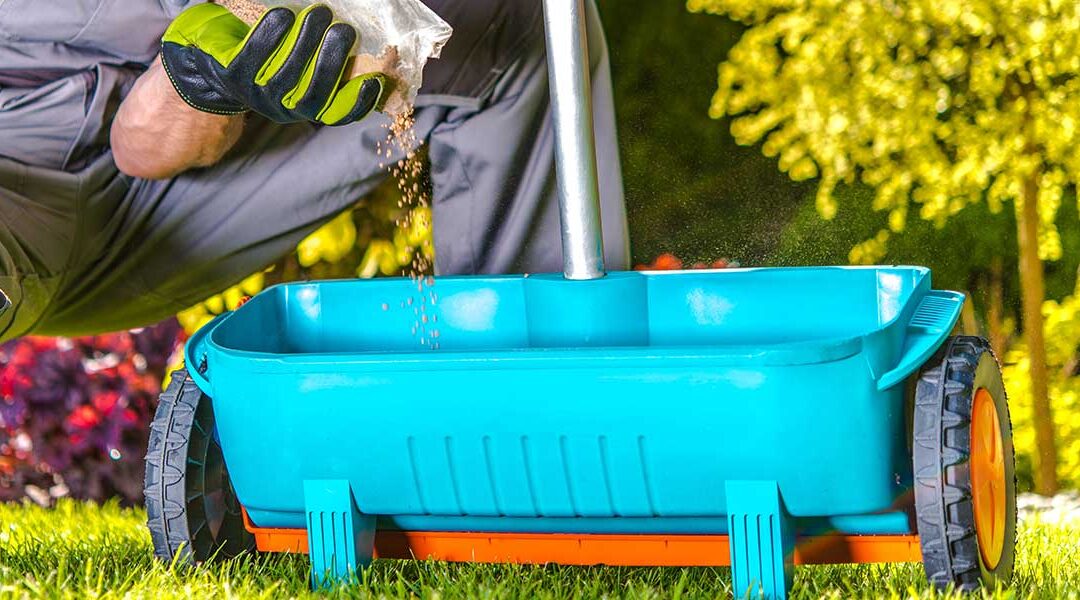Fertilizing your lawn is one of the most effective ways to promote thick and healthy grass. It’s also one of the easiest parts of yard care to get wrong. Homeowners often ask us, “How often can you fertilize your lawn without damaging it?” The answer depends on your grass type, your soil conditions, and the time of year.
WestCo Outdoor Services is mid-Missouri’s leader in landscaping care, and we’d like to share what you need to know about developing a smart, sustainable lawn fertilization schedule.
What Happens When You Fertilize Too Often?
More fertilizer doesn’t always mean more green. Over-fertilizing can “burn” your lawn, leaving behind yellow or brown streaks. In some cases, it causes shallow root growth, making the grass more susceptible to disease, heat stress, and drought.
Nitrogen is the primary ingredient in most fertilizers, and it’s especially potent. Improper timing of nitrogen application can lead to quick growth above ground but weak roots below. That’s a recipe for disaster during hot Missouri summers.
Signs of over-fertilization include:
- Brown streaks or burnt tips
- Sudden, rapid growth that’s hard to manage
- Poor drought tolerance or spongy thatch buildup
Apply fertilizers carefully using a calibrated spreader. Avoid overlapping passes, and never fertilize right before a big rainstorm.
Know Your Grass Type First
In mid-Missouri, most lawns feature cool-season grasses, such as tall fescue and Kentucky bluegrass. Warm-season options, including zoysiagrass and bermudagrass, are less common but still viable in sunny areas.
Before planning how often you can fertilize your lawn, you’ll need to confirm which type of turf you’re working with, as each has its own ideal feeding frequency and seasonal timing.
Set a Lawn Fertilization Schedule That Matches the Seasons
Your seasonal lawn care plan should revolve around your grass’s natural growth cycle. For most Missouri homeowners, this means spring and fall are peak times to feed their lawns.
Spring Lawn Fertilizer Applications
Early spring is a great time to “wake up” your cool-season lawn. Use a spring lawn fertilizer with slow-release nitrogen around March or April, just as the grass is starting to green up. Aim for 0.5 to 1 pound of nitrogen per 1,000 square feet.
In May, consider a second light application if the lawn looks like it needs a boost. Watch for heavy rain, which can leach nutrients from the soil.
Summer Fertilizer Routine
During summer, most cool-season grasses slow down. If you apply too much fertilizer now, it can burn the lawn or stimulate top growth when the roots are struggling.
If your lawn is yellowing or thin in early June, a low-nitrogen, slow-release fertilizer can help. Avoid feeding fescue or bluegrass during July and August unless you’re watering regularly and the lawn is actively growing.
Warm-season grasses like zoysiagrass and bermudagrass, on the other hand, thrive in summer. For these, you can fertilize every four to six weeks between May and August using 0.5 to 1 pound of nitrogen per 1,000 square feet per application.
Fall: The Most Important Time To Fertilize
Fall is prime time for cool-season grasses. This is when your lawn stores nutrients, builds root strength, and prepares for winter. Apply one feeding in September and another in late October or early November using a high-nitrogen “winterizer” formula.
Warm-season grasses may benefit from a light feeding in early September, but no later. Fertilizing them too late can make them vulnerable to winter damage.
Choose the Right Fertilizer and Use It Right
When fertilizing, slow-release products are your top choice. They release nutrients gradually and lower the risk of overfeeding. A well-balanced mix with a nitrogen-heavy ratio, like 20-5-10, is a solid choice for most applications.
Always water after fertilizing unless the product instructions direct otherwise. This helps carry nutrients to the roots and prevents them from sitting on the grass blades, where they can do more harm than good.
For precise results, consider a soil test every couple of years. Standard testing helps you understand your yard’s specific needs and stability over time.
Let WestCo Outdoor Services Take the Guesswork Out of Fertilizing
A well-fed lawn is a happy lawn, but it’s easy to go overboard. Instead of stressing over how often you can fertilize your lawn without causing harm, let the local experts at WestCo Outdoor Services handle your lawn fertilization with confidence. Whether you’re looking to revive patchy grass or keep your lawn healthy year-round, our team knows what your yard needs and when it needs it.
Contact the team with WestCo Outdoor Services today at (573) 864-9378 to schedule your personalized lawn fertilization plan.

